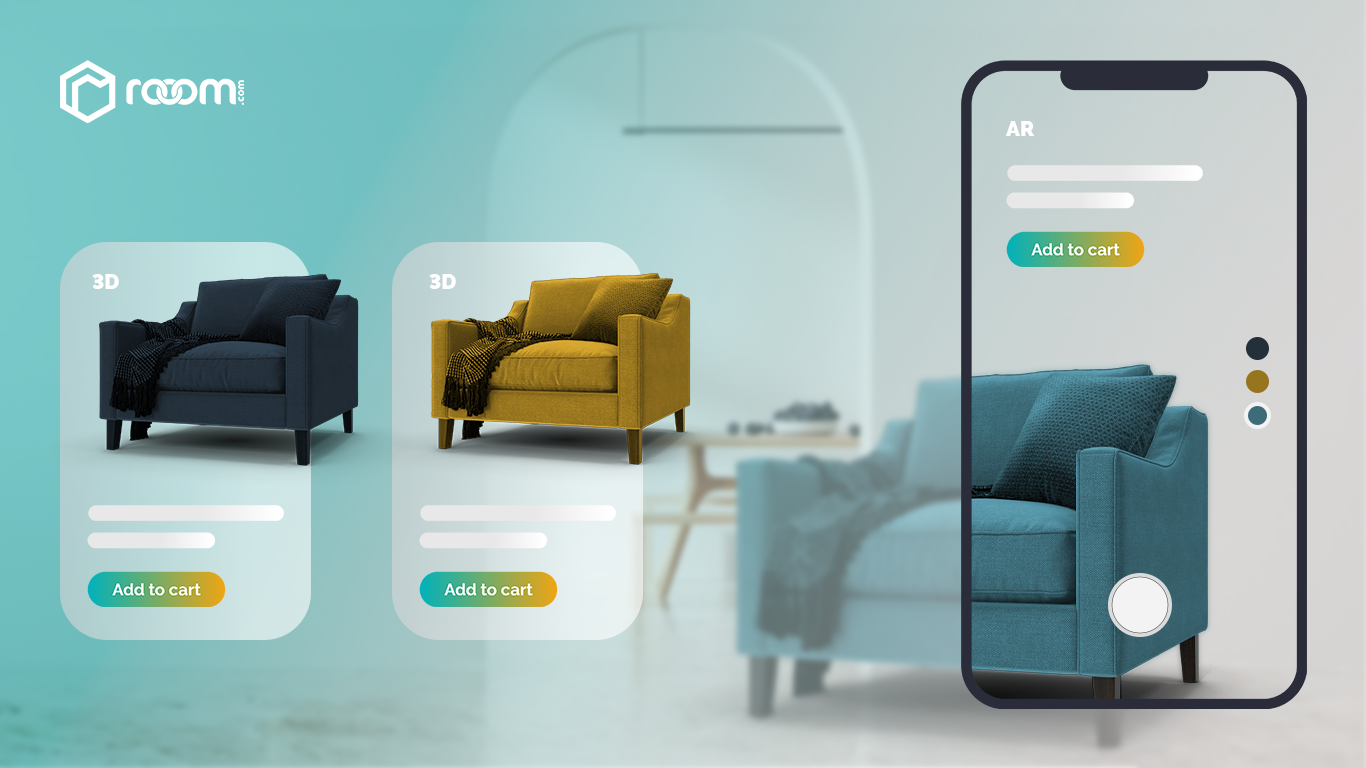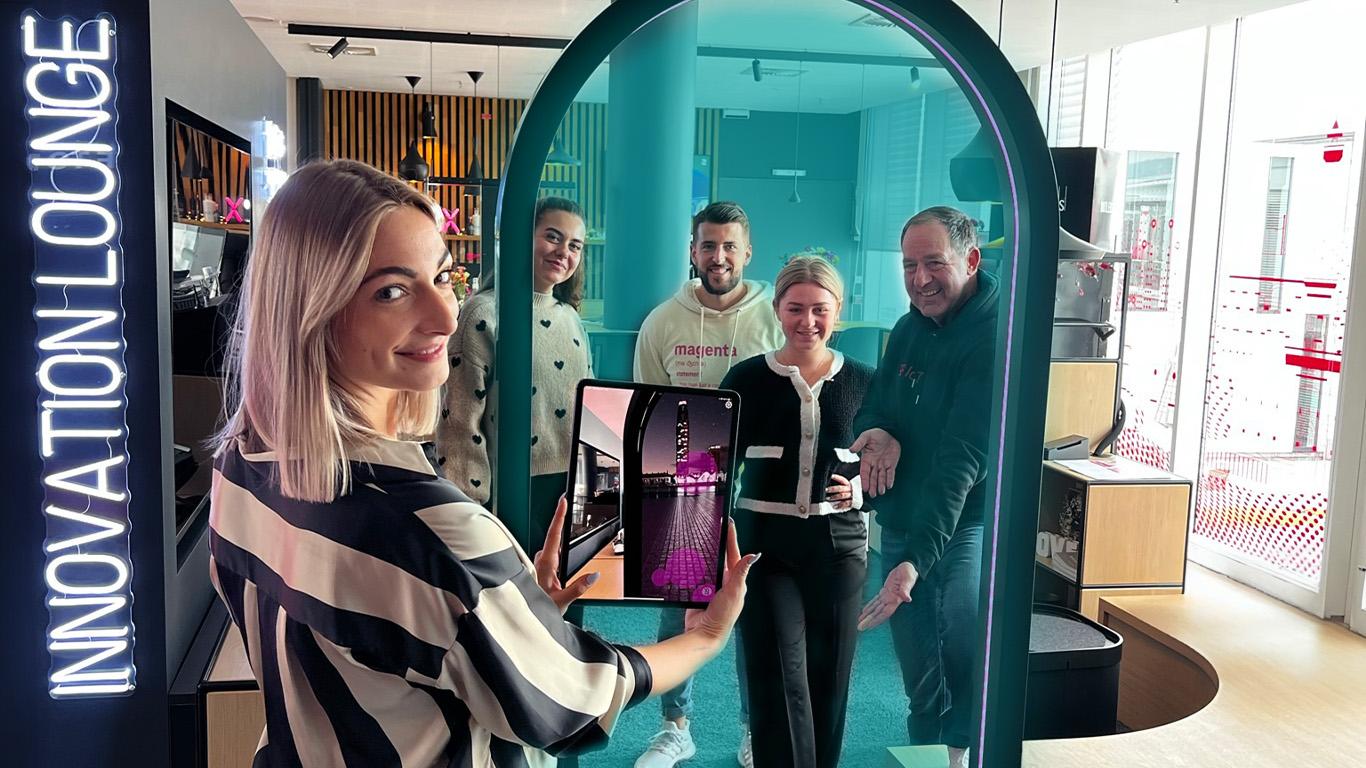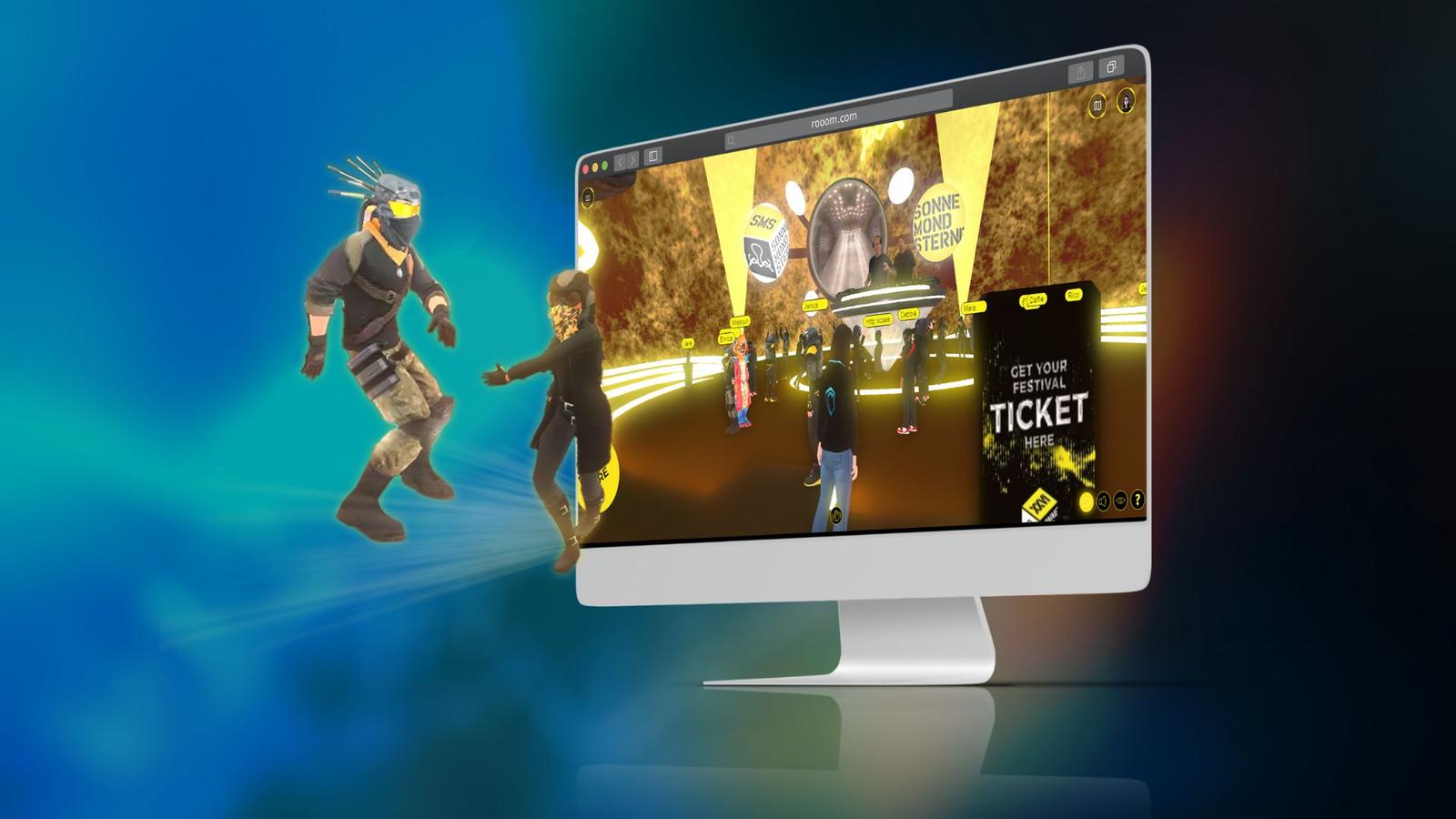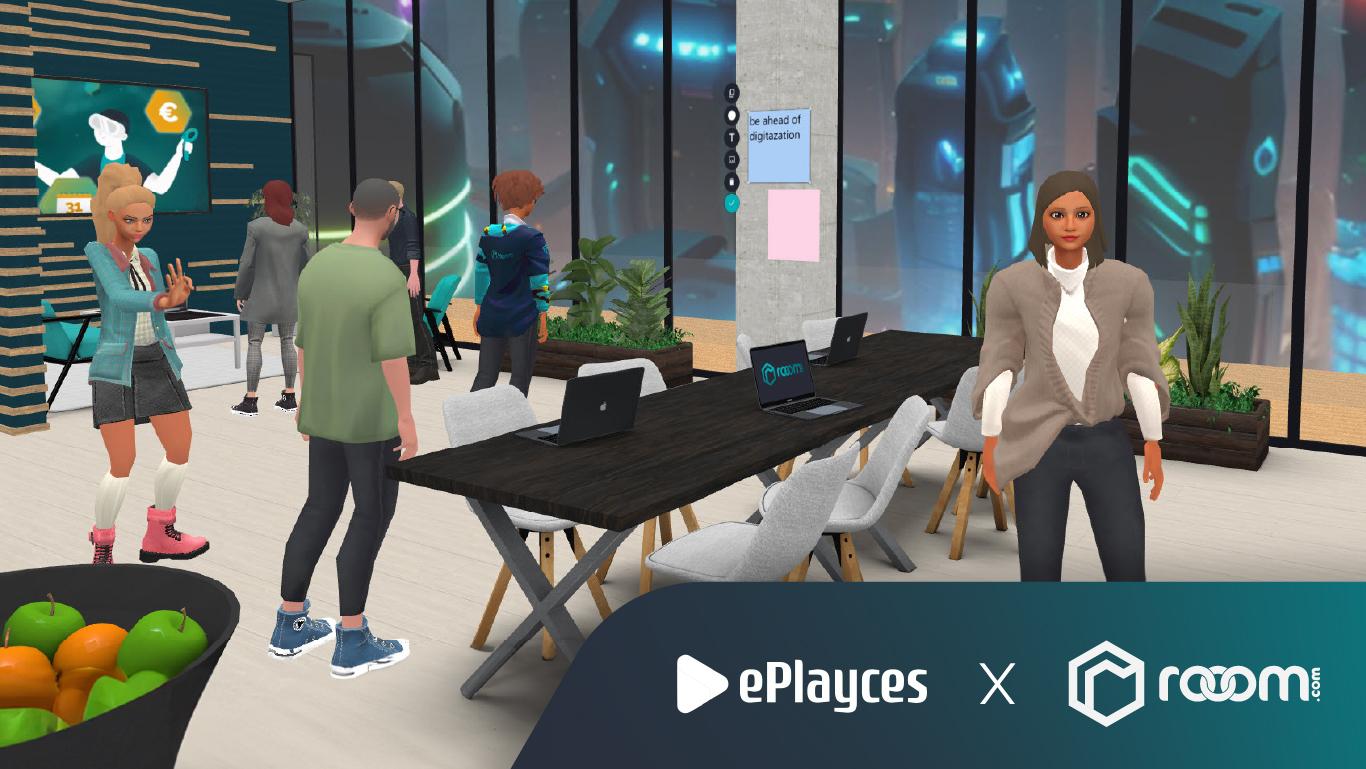Blog
User Guidance in the Metaverse

- Hot Topics
- How to Metaverse
- Blog
UX and UI design play a crucial role in making the Metaverse accessible to a wide audience. User-friendliness is the key to the success of Metaverse projects involving 3D content: whether it’s a virtual showroom, an immersive shopping experience, or a smart learning space. In this article, we will dive into best practices for creating user-friendly Metaverse experiences.
UX/UI - What is it?
UI is short for User Interface, the visual design of a digital application. UX stands for User Experience and refers to the overall experience when using an interactive digital application – not just how it looks, but how it works too. Essentially, UI design handles the "look" and UX design takes care of the "feel" of digital applications. Together, they make a big difference in customer experience and conveying a brand's message. For the customer experience and conveying a brand message, both components work together.

New Technology = New Challenges?
With the growing relevance of Metaverse applications in online marketing, the importance of customer experience in the Metaverse is also on the rise. Many software solutions are still in their early stages of development. Even the available hardware, such as VR and AR headsets, is still too inconvenient to handle for most users. An exciting and well-executed Metaverse experience can enhance customer loyalty, boost conversions, and positively impact brand perception. But that only works when it’s user-friendly, has relevant content, and is easy to navigate. If you’re using a 3D space that crashes during loading or where you can’t move smoothly, it could even lead to a negative perception of your brand in the worst-case scenario. So, companies and digital agencies looking to create Metaverse content face the challenge of making it as user-friendly as possible. In addition to designing the 3D environment, user guidance, navigation, as well as interaction and communication options also play a significant role.
For classic two-dimensional content like websites and apps, there are now certain quality standards and guidelines designed to ensure an intuitive and pleasant user experience. However, when it comes to 3D spaces and Virtual Reality experiences, current UX design standards are quite limited. 3D models and immersive technologies like Augmented or Virtual Reality offer you a lot more opportunities to engage users and take them into virtual worlds. Insights and approaches from usability design for apps, websites, and computer games are helpful but need to be expanded to new use cases. This is the only way to create a smooth transition from the text- and image-based internet to the Metaverse with its much more immersive content. So, new technologies bring both advantages and challenges. These challenges, however, aren’t entirely new – we can draw from existing strategies to make it easier for consumers to dive into the Metaverse.
How To: User-Friendliness for the Metaverse
Web-based 3D platforms allow anyone to create Metaverse content – even without programming or design expertise. Therefore, it’s essential to understand the fundamentals of successfully designing digital showrooms, meeting spaces, brand experiences, and more. Here are our tips for creating an immersive and positive experience for your guests.
Understanding & engaging your target audience
When designing your 3D experience, it’s crucial to understand and cater to your customers’ needs, interests, and preferences. Do you want your virtual space to be used for learning or marketing purposes? Keep in mind that there can be different levels of experience with 3D technology.
Onboarding
Simplify the entry into the Metaverse with well-structured video tutorials and guided tours. This makes it easy to learn the basics quickly. Who wants to dive into the unknown without a lifeline?
Accessible on various devices
A Metaverse that works on different types of devices promotes accessibility and allows a larger audience to join in – whether it’s through VR headsets or web-based browsers on laptops or smartphones.
Loading Time
Smooth performance is crucial to keep users engaged. Optimize your 3D assets to ensure a seamless user experience and minimize waiting times. Providers like rooom rely on sophisticated data minimization processes that enable high-quality graphics with fast loading times and low server load.
Don’t go overboard
Maintain some similarities between your 3D environment and the real world to provide newcomers with a familiar setting. Historical settings, for example, evoke different emotions than futuristic ones. Pay attention to consistent design elements and use VR strategically and sparingly to enhance the level of immersion.
Guiding without restricting
In the virtual realm, your guests should be able to navigate easily. Keyboard, mouse, or touchpad: offer multiple options to cater to different preferences. Easily accessible shortcuts and clickable spots prevent users from getting stuck and leaving. Gamification elements like virtual treasure hunts encourage users to explore and they add to the "Joy of Use."
Communication & Social Interaction
The Metaverse thrives with communities. We want to express our emotions and socialize here too. Personalized avatars with communication tools like voice chat and gesture recognition can help create genuine human connections. Reactions and "likes" for content are also part of the social experience now.
Content at the center
Content is king – that’s true in the Metaverse as well. Keep embedded content relevant and up-to-date and strategically place it in the users’ field of view. Highlight effects or tooltips can enhance the user guidance. 3D Content Management Systems like rooomSpaces can help with this.
Co-Creation
With the transition to the Metaverse, there’s a shift from passive consumption to active participation. Content shouldn’t just be consumed; it should be actively co-created. Features like virtual sticky notes, interactive whiteboards, and movable objects offer great opportunities for collaboration in virtual environments.
Keep it consistent
There are different ways to guide users. Once you’ve chosen specific elements like clickable spots or tooltips, it’s essential to stick with them. If you’ve taught users what a clickable thing looks like, don’t keep changing it with new interactions and hints. This way, you can maintain a "flow", which goes hand in hand with the enjoyment of using it.
AI Assistance
AI-powered assistants can be available 24/7 to answer questions or resolve issues. Do you remember Clippy, Microsoft’s virtual assistant? Back then, he was ahead of his time. Today’s assistance systems are based on well-functioning databases and can create an emotional connection when combined with an animated 3D character.
Design to prevent abuse
Security and data privacy are crucial for positive experiences in the digital space. It’s best to establish conditions from the start that curb misuse, bullying, and toxicity and create a safe space for all participants. Blockchain-based tokens, for example, can be used for identity verification, preventing misuse and fraud.
Testing & Reporting
It’s worth conducting continuous usability tests and data analysis to evaluate the quality of the user experience – even after the launch. Based on the insights gained, agile adjustments can be made to further develop and constantly optimize the offer.
Choosing the right tool
In the use of UX/UI design tools, a shift from 2D applications to 3D modeling tools is noticeable. To create user-friendly immersive experiences, you need a software that supports not only three-dimensional representations but also prioritizes a pleasant customer experience. The award-winning platform rooomSpaces offers a 3D Space Editor that is easy to use and requires no programming knowledge. Plus, you don’t even need to install any software.

Getting started in the Metaverse
Three-dimensional content creates entirely new possibilities for visual storytelling. This means designing environments suitable for the Metaverse and having AI avatars convey a brand’s story on a personal level. The bottom line for digital creators is this: A user-centric approach leads to success in the Metaverse, the three-dimensional future of the internet. Who do you want to reach with your offer? What should the environment convey, and what experiences has your target audience with immersive technologies? Depending on these factors, you can decide at what level onboarding, navigation support, and digital assistants should be used.
In the Metaverse, communication, co-creation, and interactions on an emotional level will be even more essential. Customizable avatars and various interactive features can optimize the user experience in this regard. Since the Metaverse is still in its early stages of development, it’s foreseeable that many things will change in the future – both in terms of software solutions and customer expectations. Therefore, it’s crucial to continually address your target audience’s needs and adapt to the dynamics accordingly. We’re excited to see where this journey will take us!
Is your brand about to dive into the Metaverse? We guide you through every step, from conceptualization to UX design and implementation. Book a no-obligation strategy session now!
















